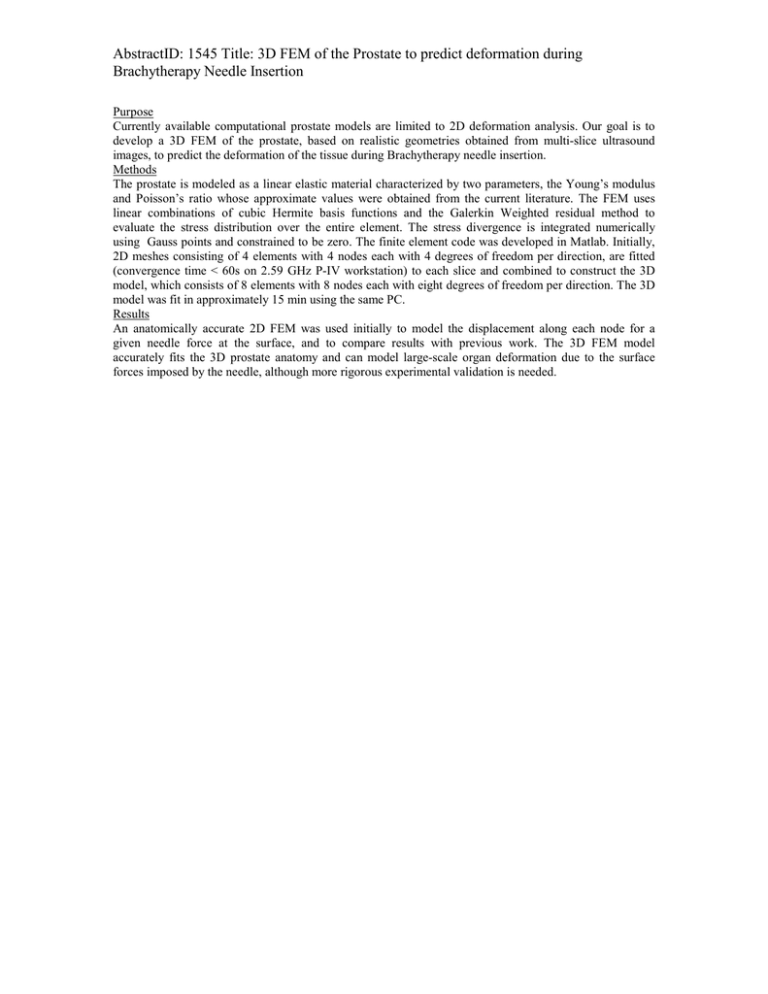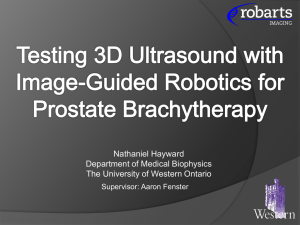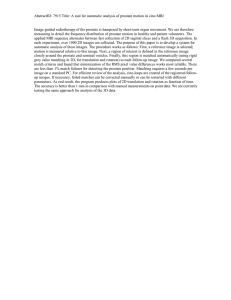AbstractID: 1545 Title: 3D FEM of the Prostate to predict... Brachytherapy Needle Insertion
advertisement

AbstractID: 1545 Title: 3D FEM of the Prostate to predict deformation during Brachytherapy Needle Insertion Purpose Currently available computational prostate models are limited to 2D deformation analysis. Our goal is to develop a 3D FEM of the prostate, based on realistic geometries obtained from multi-slice ultrasound images, to predict the deformation of the tissue during Brachytherapy needle insertion. Methods The prostate is modeled as a linear elastic material characterized by two parameters, the Young’s modulus and Poisson’s ratio whose approximate values were obtained from the current literature. The FEM uses linear combinations of cubic Hermite basis functions and the Galerkin Weighted residual method to evaluate the stress distribution over the entire element. The stress divergence is integrated numerically using Gauss points and constrained to be zero. The finite element code was developed in Matlab. Initially, 2D meshes consisting of 4 elements with 4 nodes each with 4 degrees of freedom per direction, are fitted (convergence time < 60s on 2.59 GHz P-IV workstation) to each slice and combined to construct the 3D model, which consists of 8 elements with 8 nodes each with eight degrees of freedom per direction. The 3D model was fit in approximately 15 min using the same PC. Results An anatomically accurate 2D FEM was used initially to model the displacement along each node for a given needle force at the surface, and to compare results with previous work. The 3D FEM model accurately fits the 3D prostate anatomy and can model large-scale organ deformation due to the surface forces imposed by the needle, although more rigorous experimental validation is needed.





